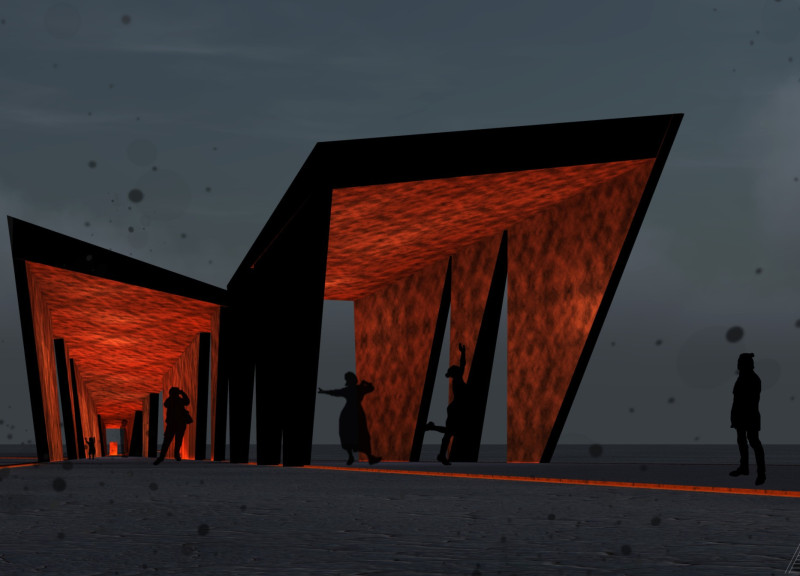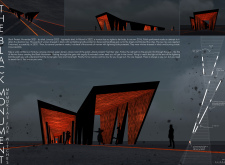5 key facts about this project
The Black Monument, located in Błonia, Kraków, serves as a significant response to the challenges surrounding women’s rights in Poland. Set within a vast green landscape, it acts as both a memorial and an engaging pathway. The design draws inspiration from the Black Protests, which highlighted the hardships faced by women like Iza and Agnieszka in their pursuit of autonomy and legal rights.
Design Elements
The monument features two key components: an entrance gate and a tunnel. The entrance gate, made from Corten steel, conveys strength and resilience. As the material weathers, it symbolizes the ongoing nature of social issues and reflects the passage of time in the context of women’s rights.
Spatial Experience
Visitors enter through a broad and open area, which creates a welcoming first impression. This openness sharply contrasts with the tunnel that follows. This change in space is intentional, depicting the restrictions placed on women’s autonomy. The design aims to evoke discomfort, bringing awareness to the challenges many women face in the current socio-political climate.
The Tunnel Journey
As individuals make their way through the tunnel, they encounter a narrowing path that leads toward a light source. This journey represents the struggle for rights, reminding visitors of the obstacles that complicate the quest for autonomy. Moving through the increasingly limited space heightens awareness of the fight against oppression that many experience daily.
At the end of the tunnel, the light signifies a sense of hope. However, the journey to reach it is not easy. The transition from darkness to light creates a powerful moment that encourages reflection on the resilience required in the pursuit of rights. The interplay between the constricted tunnel and the illuminating exit leaves an impression of the ongoing struggle for autonomy.



















































